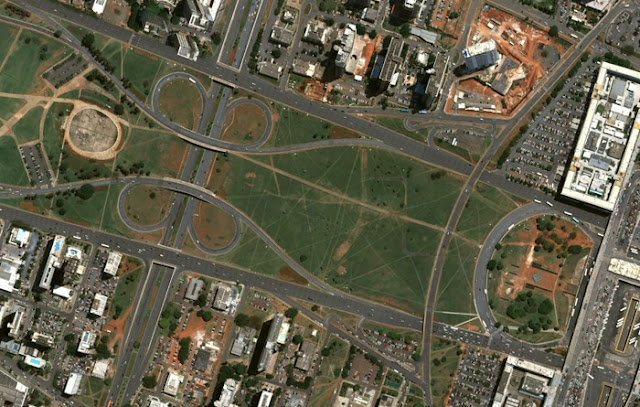Many people I spoke to stated that Brasilia was built for the car not the pedestrian. This is not strictly true. The designer’s intention was that people and cars would be separated giving people safe spaces to walk in and cars few restrictions eg few pedestrian crossings. The idea is that between the city’s sectors, people would drive (or be driven). Once in a sector, they would walk along distinct walking routes.
The Realties are very different. Brasilia has very high car ownership and usage. In a country with low car ownership and usage comparatively. The lessons from this? Our cities need to reflect that humans need and want to walk and allow them direct safe routes. Probably too late for Brasilia but not too late for other places. Lessons below.
Make it easy for people to walk Between Sectors
Walking between sectors is almost impossible. I think this first video fascinatingly illustrates this. The Hotel Diplomat and the Econohotel are about 600 metres apart. One is located in the Northern Hotel Sector and one in the Southern Hotel Sector. To safely and legally walk between them requires a 2.3 kilometre walk.
Give People logical and short Walking Routes
The Walking routes that have been laid out for people in Brasilia are not the shortest. This video shows an example of this outside a shopping mall. To cross the road to the mall legally means a diversion of at least 400 metres in total.
This aerial shot of Brasilia from the Blog Discovering Urbanism shows the massive network of unofficial paths that criss cross the open space so people can get to places faster.
The pedestrian accident rate in Brasilia is five times higher than the US average. One of the reasons is the way Pedestrians have to negotiate roads. There are four types of Pedestrian crossings in Brasilia:
- Underground passages: long, dark, deserted- as a result rarely used day or night
- Underground passages linked to subway stations- newly updated, still long, better lit and more used but still often empty of people
- A few legal crossings mostly accompanied by a very unpleasant audible walk signal as demonstrated in the first video below.
- Illegal crossings. This second video below illustrates the enormity of the task in downtown Brasilia. Many Brasilianos take their lives into their hands and bolt across six lanes of fast moving traffic to get to somewhere easily. I can see why the death rate is so high



Comments